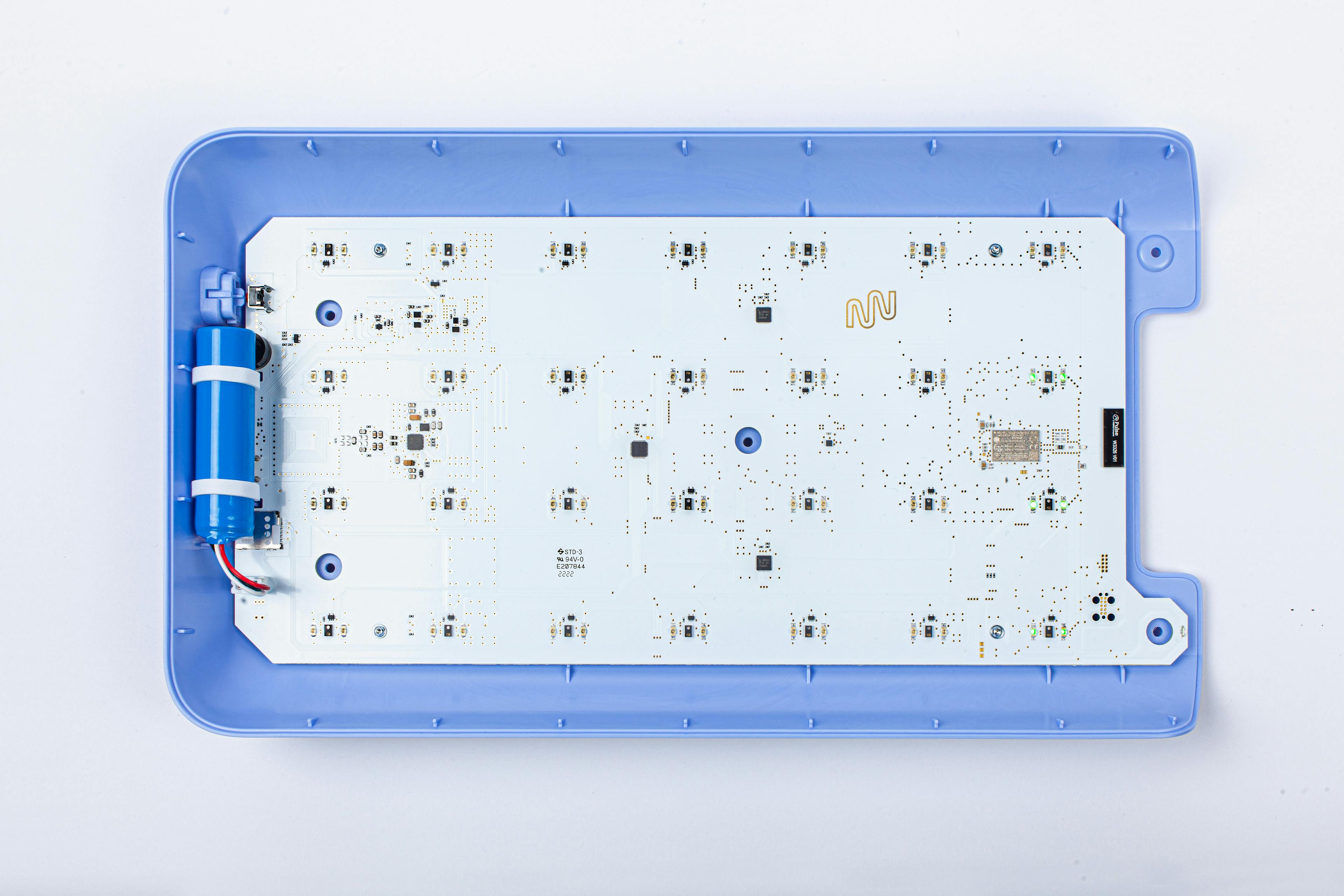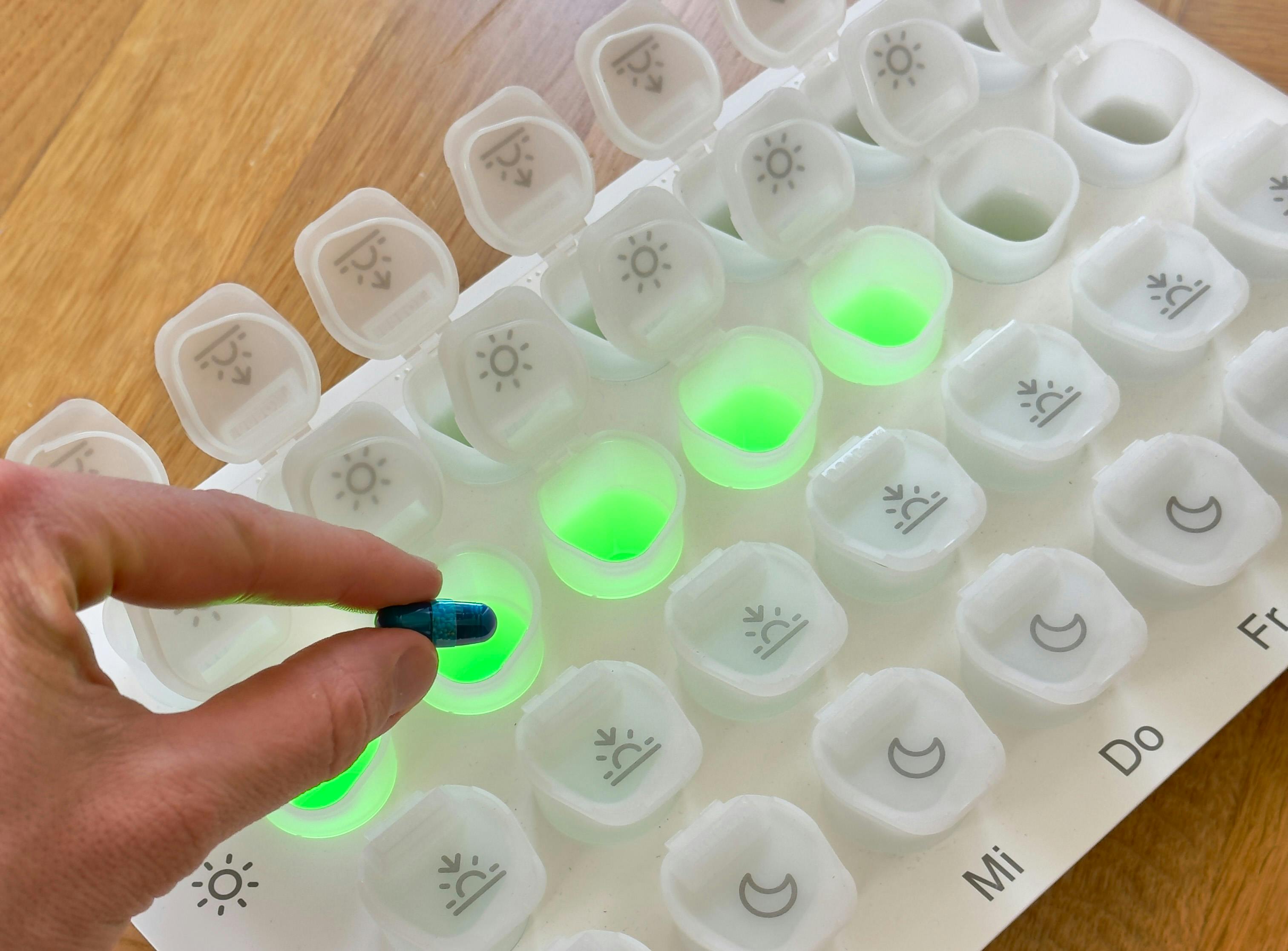How is the extraction actually detected?
The Anabox Smart uses so-called time-of-flight sensors to detect the removal of medication. These sensors operate on a simple but effective principle: they emit light pulses and measure the time it takes for the reflected light to return to the sensor.
The Anabox Smart uses so-called Time-of-Flight sensors, to detect the removal of medication. These sensors operate on a simple yet effective principle: they emit light pulses and measure the time it takes for the reflected light to return to the sensor. Since the light travel time changes with distance, the sensor can accurately determine whether a cup is in its field of view or not.
 Die Platine mit den Sensoren
Die Platine mit den SensorenThe removal is detected by the ToF sensors analyzing the reflections on the medication cups. If the cup is in place, it reflects the light pulses in a certain way.

As soon as the cup is removed, the reflection pattern changes, and the system registers the removal. This precise detection enables reliable monitoring of medication intake and helps identify misuse or missed doses.
Why not switches or other sensors?
The decision to use Time-of-Flight sensors instead of mechanical switches or other types of sensors has good reasons. Mechanical switches are subject to higher wear and tear as they are mechanically stressed through regular use. Additionally, dirt or deposits can accumulate in the switching mechanisms, which can impair functionality. The smooth surface of the ToF sensors makes the system particularly hygienic and easy to wipe clean – a crucial advantage in medical and care environments. Furthermore, ToF sensors are more durable as they do not require direct physical contact and are therefore less prone to wear.
 Jede Einnahmezeit kann einzeln aufleuchten
Jede Einnahmezeit kann einzeln aufleuchtenAdditional LED display for more safety
To make medication intake even safer, an additional LED is integrated. This LED provides the user with visual cues, thus supporting correct intake. Depending on the system configuration, the LED can use different blinking signals to, for example, remind of an upcoming intake or confirm an already completed removal.
